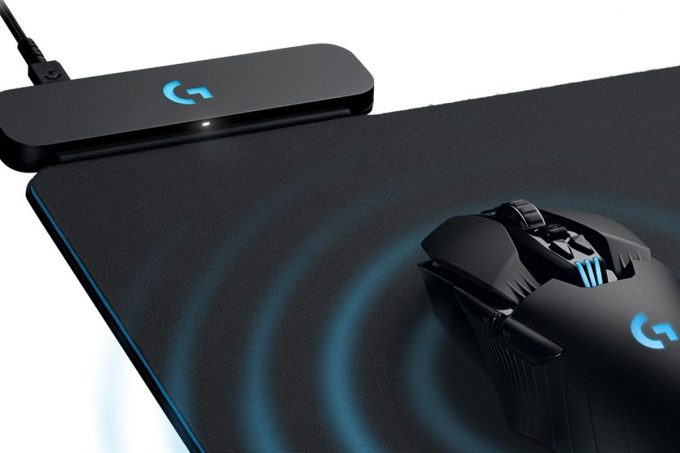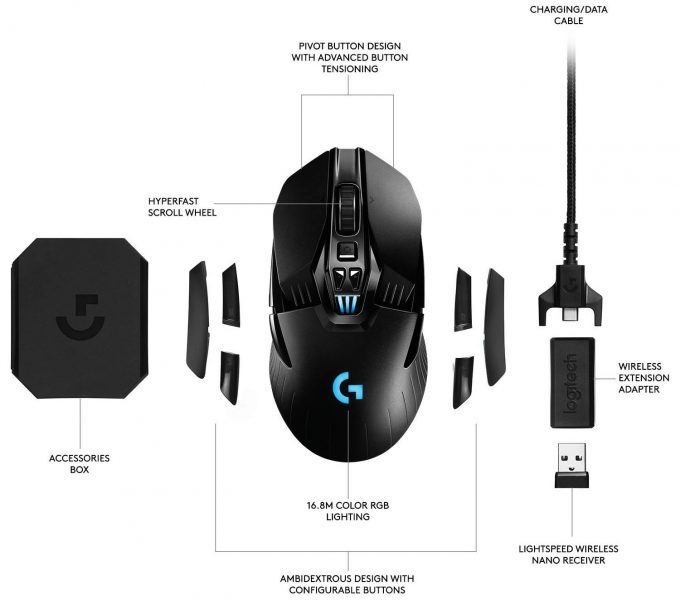- Qualcomm Launches Snapdragon 4 Gen 2 Mobile Platform
- AMD Launches Ryzen PRO 7000 Series Mobile & Desktop Platform
- Intel Launches Sleek Single-Slot Arc Pro A60 Workstation Graphics Card
- NVIDIA Announces Latest Ada Lovelace Additions: GeForce RTX 4060 Ti & RTX 4060
- Maxon Redshift With AMD Radeon GPU Rendering Support Now Available
Logitech Creates A Truly Wireless Mouse With Powerplay Wireless Mouse Pad
It finally happened! A company figured out that a mouse mat can be used as a wireless power source for mice! OK, A little sensationalist since this has been in development for a while, but Logitech managed to crack this rather difficult nut with the Powerplay mouse pad.
Untangling the mess that is wired peripherals, has been a bane of modern computers for a very long time. Wireless mice have existed for quite a while, but at some point, that pesky battery will need charging. Low-power wireless mice are available, such as Logitech’s 18-month Marathon mouse, but these are low performance, slow to wake-up mice, mainly for business users. Gaming mice need all the bling and full responsiveness from the get-go, and that typically means mice that last barely 12 hours. Wouldn’t it be nice to have a permanently wireless mouse?
Wireless charging has existed for a while, in fact, it’s very old tech that dates back to the days of Tesla. While smartphones have recently started to include it as an option, it’s been used for things like toothbrushes for a while (notice how your electric toothbrush doesn’t have any power contacts, yet still charges?). The problem with it is two-fold. First, it’s heavily reliant on proximity. Magnetic resonance only works when the two coils are right next to each other, which normally requires forced alignment of some kind (typically magnets or something mechanical like a guide). The second problem is efficiency. Wireless power suffers from that dreaded inverse-square law since energy is radiated out of a coil, and most of it will be wasted.
So how does Logitech intend to deploy such wireless charging tech in its new Powerplay peripherals? As is customary, details are scarce, but we can take a number of guesses at it. Since this is intended to be used all the time, a fixed coil location would seem unlikely, since reminding users to move the mouse over a charging area would be little more that a cable in disguise. It’s possible this is the setup, but a more elegant approach would be to embed multiple sets of charging coils throughout the mouse mat, then as the mouse traverses them, the charging module will always be in contact with a coil.
Currently, Logitech will be selling the units in two parts. The Powerplay bundle, which is the charging base, two different mouse mats (hard and soft), and a Powercore module that plugs into the mice. The second part will be the mice themselves, and these need to be specifically designed for the Powercore.
The Powercore, the unit that goes inside the mouse, appears to fit where the weight adjustment compartment is located on Logitech’s top-end mice. This is not to say any mouse will be able to use the Powercore, though, as the core will still need to be connected to the mouse somehow. However, since there will be no need for a battery anymore (capacitors will be able to hold more than enough charge) weight should remain largely unchanged Vs a normal mouse.
This new Powerplay system will mean new peripherals, so you will need to buy a brand new mouse. Fortunately, they are modified versions of existing, but popular mice. At launch there will be the G903, which is just a G900, and the G703, which is similar to the G403. Future versions of Logitech’s mice will likely support Powercore modules as well.
The Powerplay bundle will set you back about $100, and the mice themselves will set you back another $100-$150, so in total, you are looking at around $200 minimum for cost of entry. The silver lining is that, you only have to buy the Powerplay bundle once, as future mice will likely include support for the Powercore.
Looking forward, we’ll get to experience a new age in irony. Tech support won’t ask if you mouse is plugged in, they’ll ask if your mouse mat is plugged in.
US Affiliate Links:
Logitech Powerplay Charging Bundle






